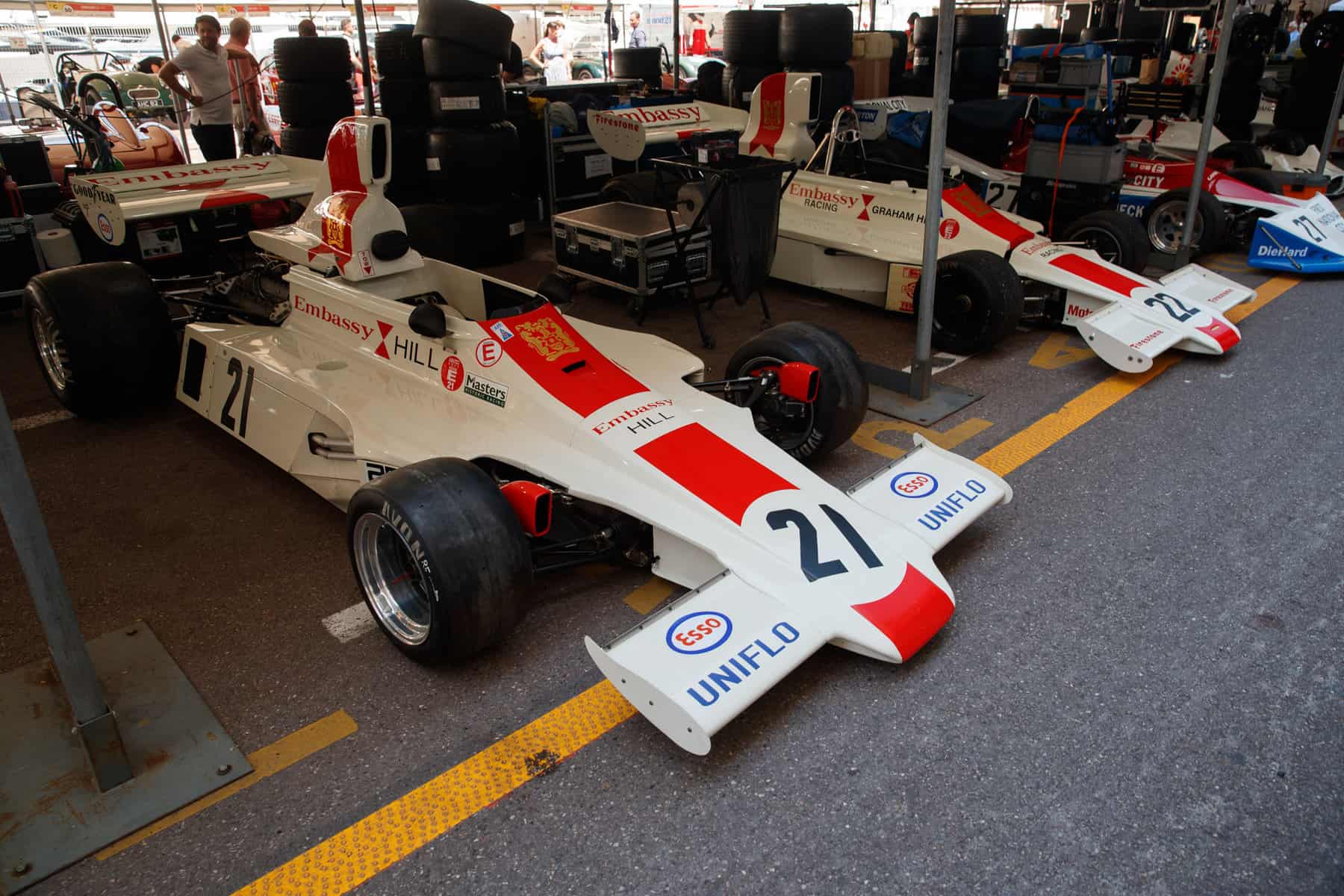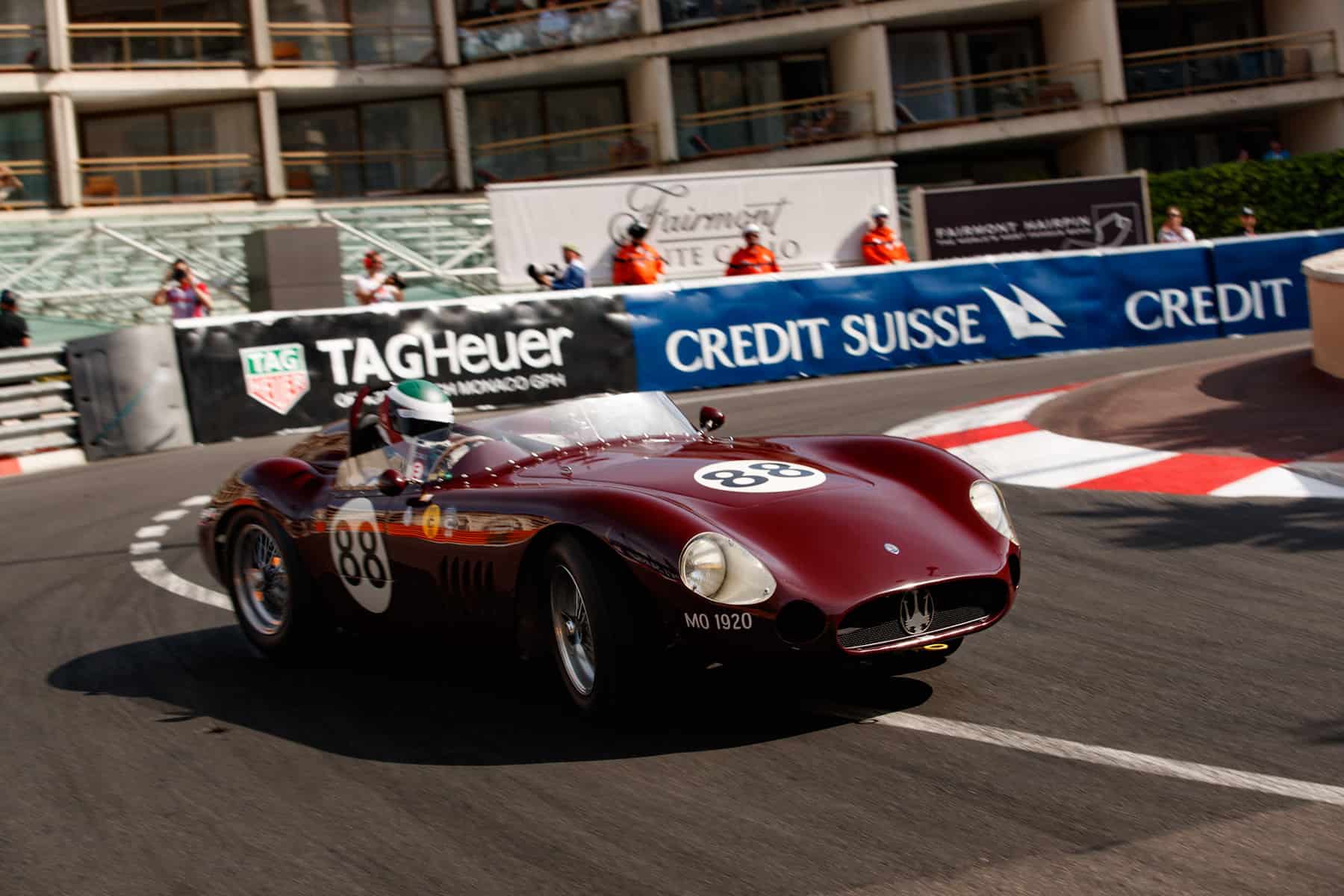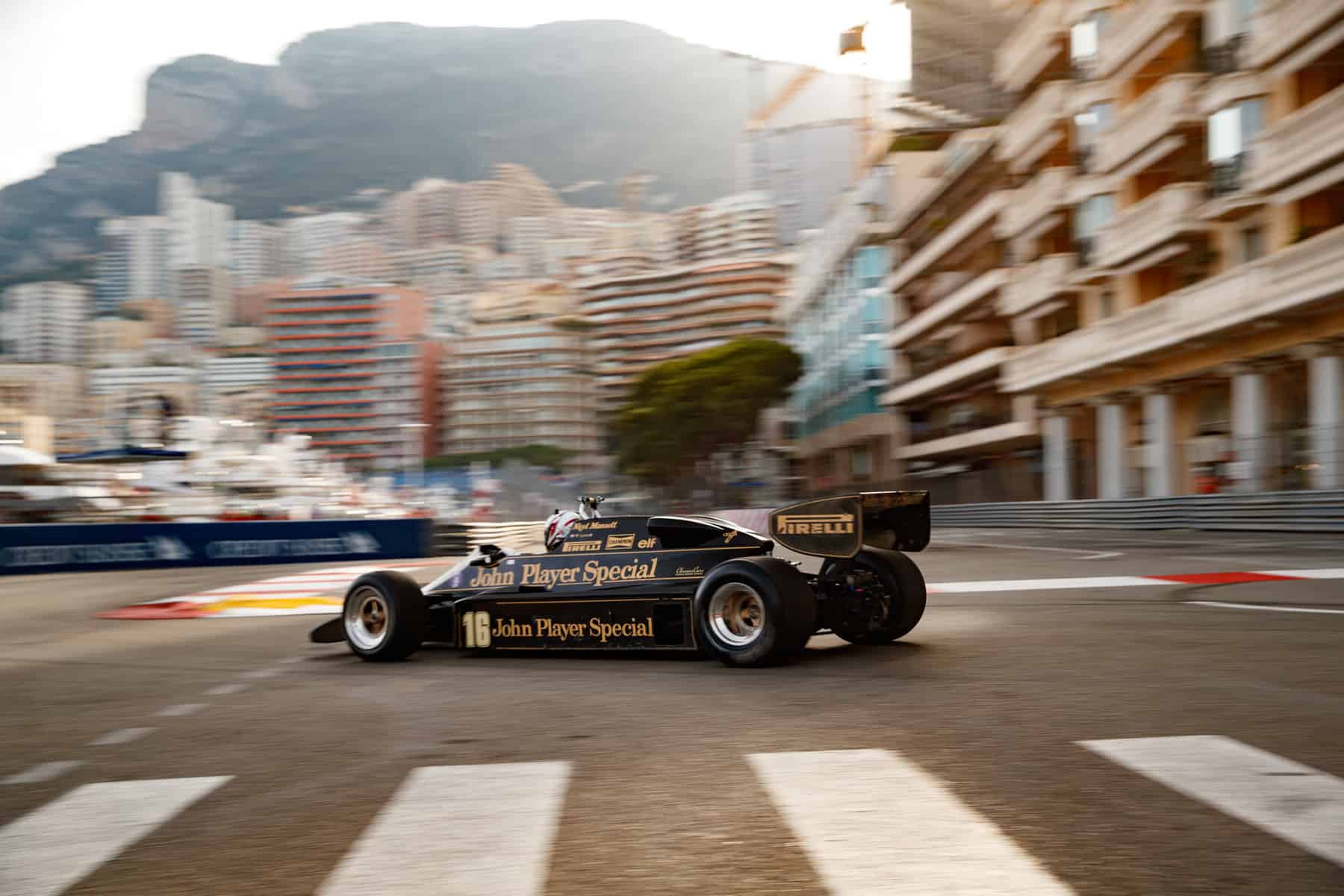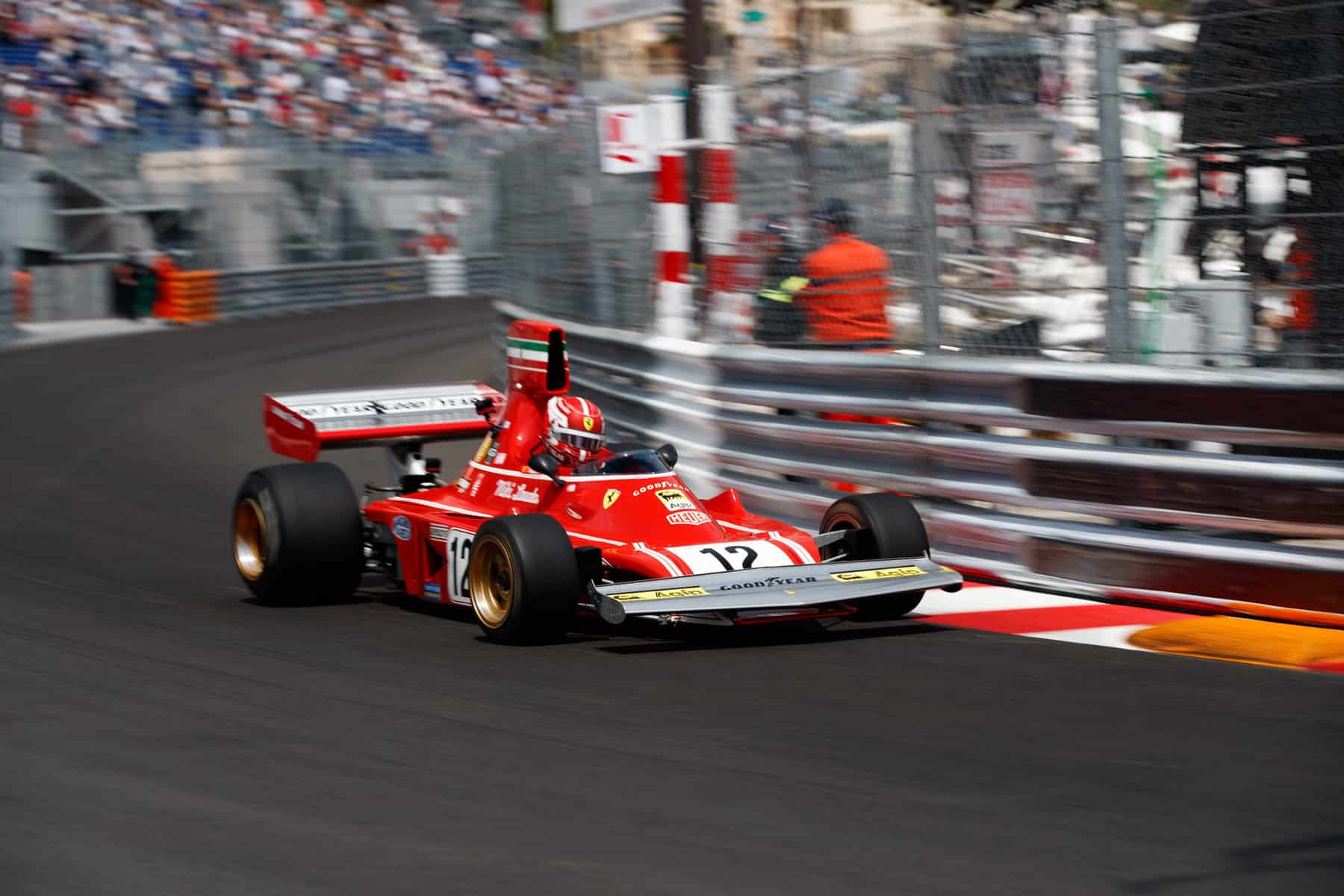2022 Monaco Historic Grand Prix
A riveting return to motorsport’s “crown jewel”
WORDS & IMAGES BY: WOUTER MELISSEN
The holiest of grails in motorsport is winning the coveted triple crown – the Monaco Grand Prix, Indy 500, and 24 Hours of Le Mans. So elusive is this achievement that, to this day, only Graham Hill managed to score victories in all three races.
For different reasons, even having the opportunity to race on each of these tracks has long been reserved for a select few drivers. Even seasoned professionals do not get the chance very often, as Marino Franchitti explained: “I never thought I would have an opportunity [to race at Monaco]. I have always loved street tracks and they do not come any more special than Monaco. I made sure to enjoy every single moment of the weekend with my family.”
The weekend to which the Sebring 12 Hours winner referred was the 2022 Monaco Historic Grand Prix. Run on the exact same circuit as the Formula 1 Grand Prix – the world-famous streets around the Monaco harbor – it was the thirteenth edition of the event. First organized in 1997, the biennial Historic Grand Prix is a celebration of the rich history of what many consider to be the crown jewel of Formula 1 racing. It does so by inviting cars of a type that competed at Monaco between 1927 and 1985 to race on the challenging street circuit once again. This offers opportunity to more people to take on “Monaco,” though in reality, the privilege is still reserved to the happy few as buying and running a car eligible for the Historic Grand Prix is a costly affair.
For everyone involved, the 2022 edition of the Monaco Historic Grand Prix represented a very welcome return to normality. In 2020, the track builders were forced to stop work halfway through the construction of the track due to the COVID-19 pandemic. The twelfth edition was then run in 2021 but effectively in a lockdown; it was like racing in a ghost town. As a result, the event lacked the atmosphere for which the Monaco Grands Prix are famous. With most restrictions now lifted, spectators were welcomed again, so once more the track was lined with massive yachts and the roof of the Fairmont hotel was packed with people getting a birds-eye view of the hairpin.
The Principality of Monaco is one of the smallest and most densely populated sovereign countries in the world. Built on the rather steep Mediterranean coast, the tiny city is one of the unlikeliest locations for a motor racing circuit, but it has nevertheless been a set fixture on the Formula 1 calendar since its inception. Over the years, very little changed to the tight track as its layout is determined by the buildings and other structures around it. What did change were the surroundings as ever more room was created to house the rich and famous that live in Monaco. The latest of these were brand new apartment buildings constructed in reclaimed sections of the sea at the entrance of the “tunnel.”
During the three-day event, eight grids were out on track for separate practice and qualifying sessions and a race on Sunday. Seven of the eight groups were for single seaters, with the eighth reserved for early 1950s sports cars. This is inspired by the 1952 Monaco Grand Prix, which was run for sports cars due to a conflict with the sport’s governing body over extensive rule changes. New for the thirteenth edition of the Historic Grand Prix was a fourth grid for 3.0-liter Formula 1 cars covering the 1981 to 1985 period. This was the start of the turbo era but for now only naturally aspirated engines were welcome. The emphasis on 3.0-liter Formula 1 cars does mean there is no longer a spot in the schedule for an alternating Formula Junior or Formula 3 class.
For Franchitti, the Monaco circuit certainly lived up to his expectations: “It did and more. It is very cool, there is next to no margin for error, add in a 1950s Grand Prix car with no seat belts and having never driven there, the intensity was up another level. It is the little things, I have driven the car before and you use your knees to hold yourself in place, but around here it was more physical than say, at Goodwood, and I still have bruises over a week later.” He continued: “What is nice is it was purely fun for me, we had no expectations, and it is not a car that is capable of winning, so I could just soak in every little detail, experience and thrill.”
He was at the wheel of a 1957 Maserati 250F similar to those raced in period by Juan Manuel Fangio and Stirling Moss: “Having the car in exactly the same state as it raced in the 1950s with so many heroes at the wheel, so to get a small insight into what they experienced in the purest form possible was very, very special indeed. We did not quite have the gearing spot on, so were out of the ideal rev range at some places, but it was fun working out how to drive around that. It is definitely a car more suited to the wide-open tracks, but even so, it has the sweetest and most intuitive balance of any car I’ve ever driven so it was fun to try to exploit that in the tight confines of this track.”
“I really loved the whole section from Beau Rivage to the exit of the Tunnel. Once you learn it and it starts to flow from one corner to the next, it is very satisfying.” Franchitti continued: “I really hope we get to go back in a couple of years with the car as the driveshaft snapped on lap 2 of the race and now I know the track better, I really want to get back out there, it is a track in this car that leaves you wanting more, which says it all really.”
Due to the event’s stature, the Monaco Historic Grand Prix also manages to attract a selection of cars that are not raced anywhere else. Perhaps the most evocative of all grids this year was “Serie D” for 3.0-liter Formula 1 cars built between 1966 and 1972. In addition to the ubiquitous Ford-Cosworth DFV V8 powered machines there were three twelve-cylinder-engined Matras and Ferraris each as well as a sole BRM P153. Originally raced in period by Pedro Rodriguez, it was now fielded for fellow Mexican and former Formula 1 racer Esteban Gutierrez. Especially for the occasion, he wore a lovely tribute helmet in the style of the one worn by the older of two Rodriguez brothers.
Racing at Monaco in and of itself was enough of a reward for most, but there were of course eight highly coveted race victories on the table. A regular challenger for victories at Monaco is American collector Larry Auriana and his driver Joe Colasacco. Instead of acquiring a fast car, they took a more complicated but also more exciting route by developing a very rare Ferrari 1512 F1 into a competitive machine. Fielded in Serie B for the 1961–1965 1.5-liter Formula 1 cars, it is powered by a diminutive flat-12 engine. Raced in 1964 and 1965, it was not a race winner but did lay the foundation for the later Ferrari successes. In the hands of Colasacco, the car had already won at Goodwood, but a Monaco victory had still eluded him until this year.
“It gave us great satisfaction to win at Monaco, especially in this important F1 Ferrari that was driven by Pedro Rodriquez, Lorenzo Bandini, and world champion John Surtees.” Colasacco explained: “It’s a great testament to team Auriana Racing, to bring this highly complex car to victory in Monaco. Only through the perseverance and focus of a great sportsman like Mr. Auriana could this have been achieved. I was just happy to be a part of It.” Colasacco had started from pole position in the race but received great opposition in the race from Mark Shaw in his ex-Jim Clark Lotus 21. Eventually, it was the screaming Ferrari that came out on top ten years after Auriana and Colasacco first fielded the car at Monaco. Colasacco concluded: “It was a great day for all of us!”
Also on top form at Monaco this year was British professional racer Stuart Hall, who drove the McLaren M19A and McLaren M23 from the ROFGO Collections to victories in the Serie D and Serie E races. Thirty years after scoring a win in the Formula 3 support race of the 1992 Monaco Grand Prix, German Marco Werner was also back on the top step. The three-time Le Mans winner was at the helm of a Lotus 87B in the new Serie G from 1981–1985 Formula 1 cars and head of an all-Lotus podium. There also was a stellar drive from German Claudia Hürtgen in the Serie A2 for front-engined Grand Prix cars. She had stepped into the 1960 Italian Grand Prix–winning Ferrari 246 Dino F1 at the very last minute, but that did not stop her from clinching pole position and the victory against very strong opposition.
The Monaco Grand Prix is the crown jewel of Formula 1 not necessarily because of the track, the slowest on the calendar, but rather thanks to the glitz and the glamour and the unique atmosphere. It is exactly that, which is captured so well by the biennial Historic Grand Prix and the reason why the event attracts competitors and spectators from all over the world. You can already make a note in your agenda for mid-May 2024 when the next Historic Grand Prix is scheduled.











